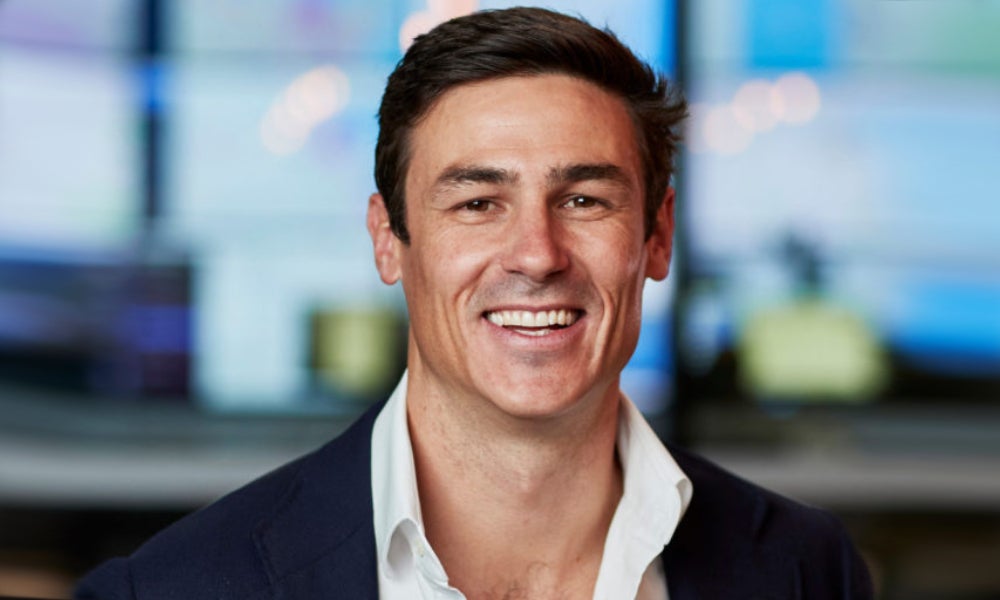Inside Sonder’s pandemic pivot from safety to mental health
As people's wellbeing became a real concern during the pandemic, co-CEO Christopher Marr explains how Sonder was able to adapt its business model to provide much-needed mental health support
With 20 per cent of Australians experiencing one or more mental health episodes in their lifetimes, the COVID-19 pandemic not only heightened the risk factors associated with poor mental health but has also brought mental health and wellbeing to the front of mind for health companies, tech start-up Sonder being one of them.
The need for mental health services became crucially important during COVID-19, and Sonder has made its mission to deliver modern tech-led safety, medical and mental health support to organisations that want to improve their wellbeing programs. The health platform provides health services to over 400,000 members, through more than 50 corporate clients including Commonwealth Bank, Woolworths, PwC, NRMA, Bupa and Toll Global Express.
Founded as a safety service in 2017 by friends Craig Cowdrey, Christopher Marr, and Peter Burnham, who had “a grand ambition that was to get help by someone's side anywhere on Earth within 20 minutes”, said Mr Marr speaking at a recent AGSM Director’s Lunch hosted by Professor Nick Wailes, Director AGSM, and Deputy Dean UNSW Business School. Having graduated from UNSW Sydney with a Bachelor of Engineering, Mr Marr went on to serve 20 years as an Australian Army officer, including ten as a leader and commander in the special forces. He later returned to UNSW Sydney to complete a Master's Program in the School of Banking and Finance at UNSW Business School in 2013, before venturing into the world of entrepreneurship.
Committed to addressing the challenges to accessing medical assistance by disrupting the way people get help, Mr Marr’s role at Sonder is to lead the commercial strategy and growth of the company as its Co-Founder & Chief Commercial Officer. Today, Sonder makes $16 million in revenue a year and is understood to be looking for a $150 million-odd valuation. But the company has not always been this successful. In 2020, Sonder faced an extremely uncertain future when Australia's borders closed during COVID-19, which meant its business model – starting with on-demand access to safety services for international students through their health insurance provider – quickly became unviable.

Mental health became a primary issue during the pandemic
Just two months after Sonder struck a big deal with insurance company Allianz, to provide international students with safety services within 20 minutes, COVID-19 struck, borders closed, and international students were no longer a viable market. “The music stopped when we [Australia] closed its borders. We instantly saw a 90 per cent collapse in our revenue stream,” explained Mr Marr.
By 2020, after three years of operation, Sonder had about 180 staff, representing about 85 per cent of its expenditure within the business, a cost supported by shareholder capital. “It's pretty hard to find friends when you're in a circumstance like that,” said Mr Marr.
“Not only was a difficult position there, but we were businesses about safety and caring for people at their most vulnerable so we couldn't reduce the frontline services,” he said. “So, we had to pull cost out of the business elsewhere which saw us having to stand down 55 staff over zoom way before anyone had heard of JobKeeper,” he said.
Read more: Three useful things to know about mentally healthy workplaces
So, the business had no other option but to improve its profit and loss (P&L) very quickly. “We were now burning about $2 or $3 million a month net burn… $6 or $8 million in our balance sheet, which three days ago was going to give us 12 months of runway but was now looking more like three months of runway,” said Mr Marr.
The businesses needed to turn the situation around, but how? “Well, we took a moment of pause, which is important in any dire circumstance. We took a moment to look at the data, and notwithstanding our early hypothesis that help would equal safety. What it turned out and this won't be a surprise to anyone now, but what turned out was we looked at the data, the primary presenting issue that people were coming to us for was for mental health,” explained Mr Marr.
“And when we scratched the surface of mental health, we realised about 55 per cent of the time, it's at least two other matters that conflate to create a pretty significant and overwhelming set of circumstances for the people that we are caring for, whether that's financial challenges, safety challenges, medical challenges, or indeed mental health as a primary presenting issue,” he said.

How Sonder set out to improve access to mental health services
This was not the first realisation the company had that forced them to pivot. The first ‘mistake’ the founders made was creating a solution without first having a full grasp of the problem. “Firstly, we started with a solution without searching for a problem, and then we had enough hubris to think that we knew what help people want to know the safety. But that was wrong.
“Turned out that it was wellbeing support that people needed and it was not just wellbeing, but this multifaceted approach to care. So, in recognising that at a particularly challenging time for the business, we orientated or pivoted as is the language to become a health care company,” he said.
This meant the company had to make several substantial changes, and one was to adopt the Australian Council for Health Care standards, which resulted in Sonder becoming the first tech company in the world to have the accreditation, governance, and medical frameworks that a hospital would have.
At the same time, the business still had to repair its P&L. The only contract that was likely to repair Sonder’s P&L in a meaningful way and boost the confidence of investors and attract more shareholder capital, was to sign with the largest private employer in the country: Woolworths.
Read more: How Woolworths became Australia’s most trusted brand
“So that is where, as the Chief Commercial Officer, I set my sights. And through my network, I orchestrated a meeting with Brad Banducci, CEO of Woolworths Group and Woolworths employ about 225,000 people throughout Australia.”
The meeting turned out to be a 30-minute call with Mr Banducci on a Sunday morning while he was walking his dog. “I read in the newspaper about the critical challenges that Woolworths staff were going through during the pandemic: keeping the supply chain operating 24/7, dealing with customer abuse in store… and Banducci was lamenting the fact that notwithstanding all these different support programs within Woolworths, 55 to be exact, they were all under-utilised and weren't reaching down and having an impact on the people at the point where it mattered,” he explained.
“But we could solve this problem. We can reorientate our service to a health care company that deals as a single-entry point to employee care, and that is what we put to Brad,” he said.
Five months later, Sonder struck a deal with Woolworths, which “provided a huge opportunity for our business to pivot out to successful pivot and orientate to becoming the healthcare company that we are today”.

Sonder's sustainable business model
While Sonder has seen enormous success, driven by deals it has been able to strike with large organisations, one of the latest being real estate agency Di Jones, Mr Marr and his team have also become keenly aware of their own mental health following the pandemic.
“I've only sort of recently become aware of my own mental health challenges if I'm honest,” said Mr Marr.
“We're in this race. And this race is relentless. And when you're spending shareholder capital, you've got this greater obligation to make sure you deploy that well with capital efficiency and you're making it you're not leaving any stone unturned in how you drive for the agenda. But the truth is about it's about balance.
“And I think, ultimately, the goal is to win with a sustainable model. And if you've got your whole team running at 1000 miles an hour to generate the growth that you need to succeed, you may have missed the bigger picture,” he says.
Read more: How did COVID really impact the mental health of CEOs? (part 1)
